How do you plan your garden?
vettin
14 years ago
Featured Answer
Sort by:Oldest
Comments (35)
jeannie2009
14 years agolast modified: 9 years agojerijen
14 years agolast modified: 9 years agoRelated Discussions
Do you 'plan' your garden beds?
Comments (31)Kippy, I think they'll be alright. It's not unusual for them to have some transplant shock. Keep them well watered and give them some time to recover. I agree that everyone's garden is a reflection of themselves. And that changes with time too. I think the best gardens are never finished but always growing and changing as the gardener learns and changes too. I've found that when I go to public gardens they look rather static to me. Private gardens, on the other hand, seem to flow and change and hold surprises now then. You go down a path or turn a corner and AHA, there's a something unexpected to catch your eye that tells you a little something about the gardener. But then I don't like "soldier" gardens where every thing is planted in neat little rows. I like my gardens full to overflowing and spilling out with colors and shapes and scents. I guess that would be the more Mother Nature style. MN doesn't care if she puts red and purple and yellow together or if the tall guy is growing in front of the short fellow. She paints with a wide brush!...See MoreHow do you plan your lovely gardens?
Comments (4)Lilyfinch- I like the cottage style, so I plant roses together, despite petal style, but I do usually stick with white, shades of pink and lavender pinks. Against the house, I like to put damasks and other once bloomers towards the back of the garden, with smaller hybrid musks and repeat bloomers in the middle. Towards the front, I use lavender and lots of alyssum, but I also like to include daisies, bee balm, catmint, salvias, petunias, pansies, and peonies, just to mention a few. In the fairy garden, I have butterfly bushes in the back, to keep the deer out. In the garden, I put the repeat bloomers in the middle, with the gallicas towards the edges. This way, when the coneflowers and other perennials start blooming, they add more color to that part of the garden. Along the front of the porch, I'm redoing a few things, but I have Fantin Latours at each end, with a Lavender Lassie that I'm moving to the middle, so it will hopefully work it's way up to the railing. In between these roses, I have purple clematis. It's not a very deep bed, so I'm probably going to move the Sarah Bernhardt peonies in front of the clematis. I have salvia and lavender on the ends and I want to add spearmint along the front (to keep the deer away) but it's so invasive, I probably should sink some bottomless pots in the ground, to try and contain it a bit. As for fragrance, I like the combination of old rose, lavender and spearmint together, but it might not work for everyone :)...See MoreDo you plan your garden spaces or do they just happen?
Comments (23)Not really at first... Mostly have inherited gardens when buying a house. But though the years as I have put my stamp on the gardens they have evolved and so has my way of gardening. Now when I want to put in a new bed I think of what I want the garden to look like and what purpose it will serve. I look at it as a space or room. What activites will be in that garden area. Will I want to sit out there, wander around within the garden, mainly viewing garden, picking garden, etc... I ID if there needs to be various entry/exit points, design for using gardening tools ( wheel barrow for example), privacy, paths, whether I will have a water feature etc.... Then I do what I want. LOL At least I have a plan in my head. Keeps me on track, sorta. I do try to have a base plan drawn up. That way when I have an idea what I want to do in an area, I purchase plants that fit. I plant for shade or sun, by height and width etc... I find I don't have to move so much if I keep in mind what I want in certain areas. I have in the past planted a tree that reaches 20 feet tall and 15 feet wide at maturity and what I had wanted was one that was half that size. I find that as I go along, I want attractive gardens that I don't have to worry so much about suckers, root issues, pruning, messy fruit and invasive plants. I want a garden that kinda maintains itself without a lot of effort on my part (outside of deadheading and general maintenance). That is where a design plan comes into play so much.... I have a friend who is a successful landscape designer and she has shared some of her teaching tools in her residential landscape class with me. Using them helps me stay more focused and on track. Great tools....See MoreDo you plan for wildlife in your garden?
Comments (28)Apparently I'm in good company with my butterfly bed that's stuffed with all their favorites and my oversize collection of bird feeders in the crabapple tree. I designed the butterfly bed specifically to attract them and so far am happy with the end result. There's still lots of space to fill in but it's getting there gradually. My folks planted with wildlife in mind before me so there are dogwoods, mock orange, lilacs & others to attract birds. There's a 40 ft. x 30 ft. area of white hydrangea growing on the southern boundary the birds use as a sanctuary. They stop off in the lilac bush on their way to/from the birdfeeders & birdbath. I've counted as many as 25 junkos in the mock orange during snowstorms, all puffed out like little gray tennis balls. Every year wrens nest in each of the three birdhouses hanging in the crabapple tree. One morning this summer I noticed my motion sensor light had come on. When I peaked through the curtains out the front window, there was a red fox stretching as tall as he could trying to raise his chin over the edge to get a drink from the birdbath. I felt so guilty, I washed out a big bowl & set it on the ground beside the birdbath for him. I kept it filled the rest of the season. No rain fell here from June-October so the critters were thirsty along with all my plants. The foxes took over a former rabbit & woodchuck burrow, made it bigger & raised 3 pups down behind my 80 ft. row of blueberry bushes. Yes, they ate all the blueberries this year. Like I said, there was a really bad drought here in southern New England. I took a few pictures through the window screen when they came out to play in the early mornings: A few lucky shots of robins enjoying the ancient plastic birdbath under the crabapple tree: I think the Cooper's hawks that nest down in the woods at the back help keep the rodent & bunny populations under control but the chipmunks can be a problem. Esme the snake makes her rounds of the flowerbeds and takes care of whatever varmints use the hosta leaves to hide under from the hawks....See Moreholleygarden Zone 8, East Texas
14 years agolast modified: 9 years agoingrid_vc so. CA zone 9
14 years agolast modified: 9 years agojerijen
14 years agolast modified: 9 years agocarolinamary
14 years agolast modified: 9 years agoUser
14 years agolast modified: 9 years agoharryshoe zone6 eastern Pennsylvania
14 years agolast modified: 9 years agocatsrose
14 years agolast modified: 9 years agogardennatlanta
14 years agolast modified: 9 years agohartwood
14 years agolast modified: 9 years agolori_elf z6b MD
14 years agolast modified: 9 years agoiowa_jade
14 years agolast modified: 9 years agomelva
14 years agolast modified: 9 years agolavender_lass
14 years agolast modified: 9 years agohoovb zone 9 sunset 23
14 years agolast modified: 9 years agoseattlesuze
14 years agolast modified: 9 years agolavender_lass
14 years agolast modified: 9 years agoluxrosa
14 years agolast modified: 9 years agosanju
14 years agolast modified: 9 years agodiane_nj 6b/7a
14 years agolast modified: 9 years agoelemire
14 years agolast modified: 9 years agoolga_6b
14 years agolast modified: 9 years agoingrid_vc so. CA zone 9
14 years agolast modified: 9 years agoolga_6b
14 years agolast modified: 9 years agomyloki
14 years agolast modified: 9 years agorjlinva
14 years agolast modified: 9 years agobettyn_gardener
14 years agolast modified: 9 years agorosefolly
14 years agolast modified: 9 years agolori_elf z6b MD
14 years agolast modified: 9 years agocweathersby
14 years agolast modified: 9 years agomelissa_thefarm
14 years agolast modified: 9 years agobettyn_gardener
14 years agolast modified: 9 years agolavender_lass
14 years agolast modified: 9 years ago
Related Stories

GARDENING GUIDESGet a Head Start on Planning Your Garden Even if It’s Snowing
Reviewing what you grew last year now will pay off when it’s time to head outside
Full Story
GARDENING GUIDESWhat Are Your Spring Gardening Plans?
Tearing out the lawn? Planting edibles? Starting from scratch? Tell us what you plan to change in your garden this year
Full Story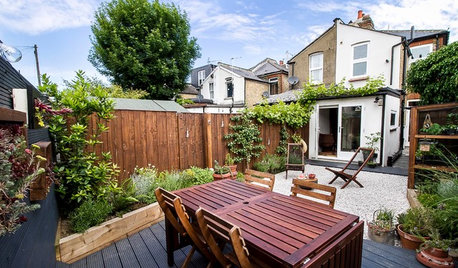
GARDENING GUIDESHow to Plan Your Edible Garden
Get organized before you plant to ensure that your fruits and vegetables have a chance to thrive
Full Story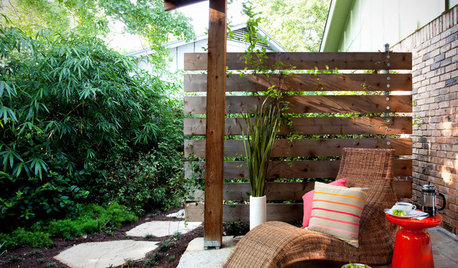
LANDSCAPE DESIGNThe Best Winter Garden Project? Plan for Next Year
Consider these 9 ideas now for a highly personal, truly enjoyable garden come spring
Full Story
GARDENING GUIDESHow to Switch to an Organic Landscape Plan
Ditch the chemicals for a naturally beautiful lawn and garden, using living fertilizers and other nontoxic treatments
Full Story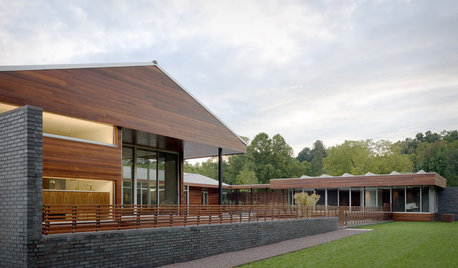
REMODELING GUIDESHome Designs: The U-Shaped House Plan
For outdoor living spaces and privacy, consider wings around a garden room
Full Story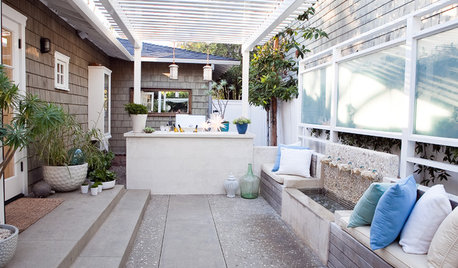
GARDENING AND LANDSCAPINGPlan Your Patio at Summer's End? Yes!
Score fabulous deals for your deck, garden or patio and put your summer experience to good use in upgrading for the future
Full Story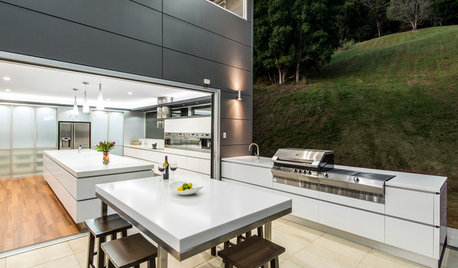
KITCHEN DESIGNHow to Plan a Kitchen That Extends Outside
Indoor-outdoor living gets easier with kitchen designs that bridge the divide
Full Story
GARDENING AND LANDSCAPINGBocce, Anyone? Toss Some Popular Games Into Your Yard Plans
Score points for entertaining with a yard set up for lawn bowling, croquet, chess and more
Full Story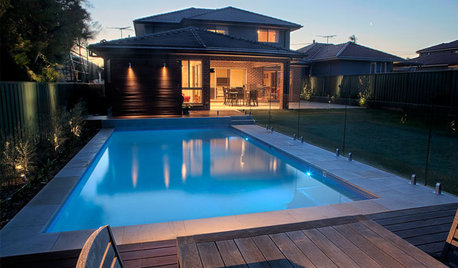
GARDENING AND LANDSCAPINGPlan for Summer: Protect Your Family With a Safe Pool
Fencing, presence detectors and non-slip materials help keep your pool area accident-free
Full Story



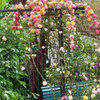
sergeantcuff